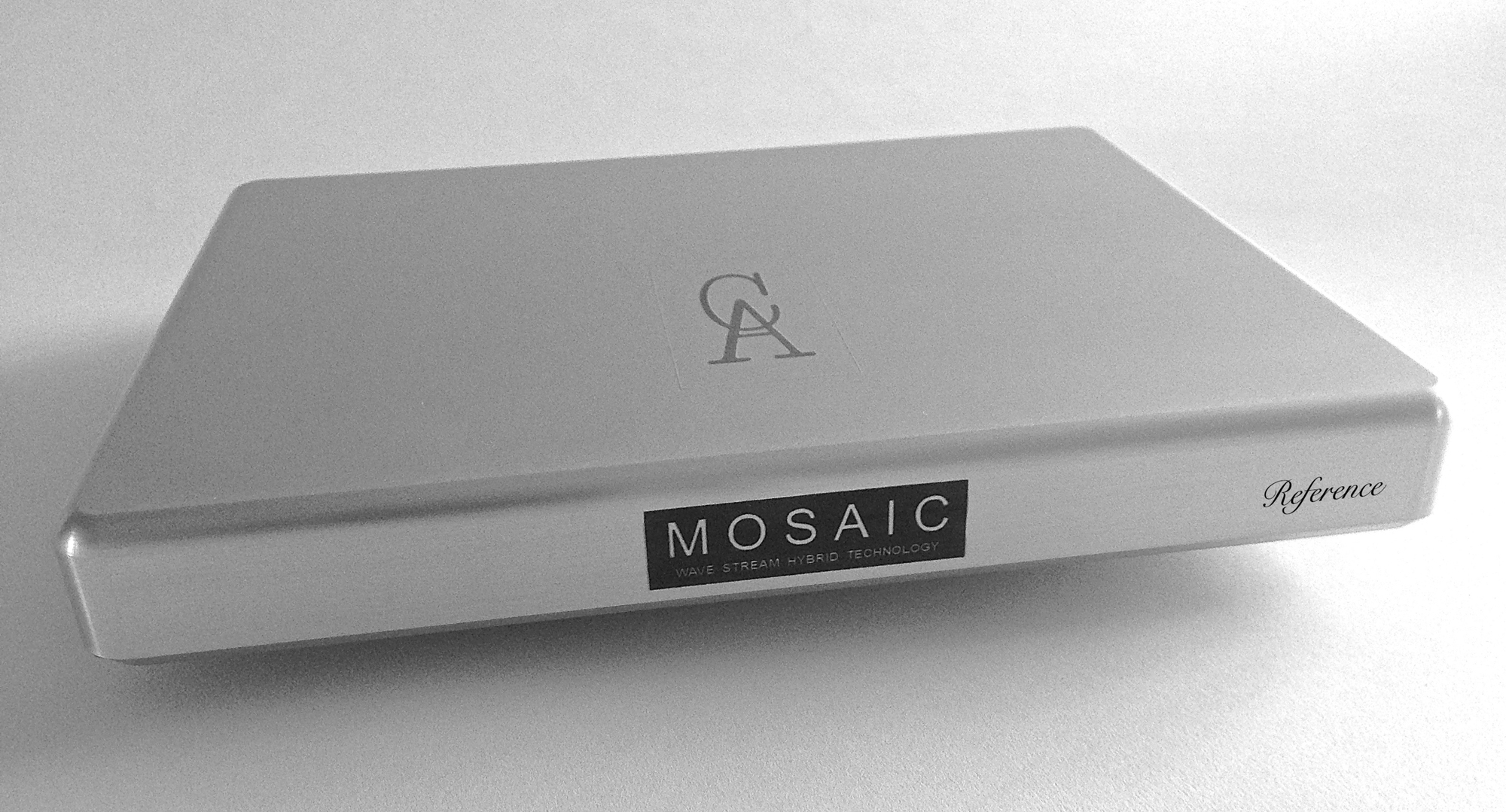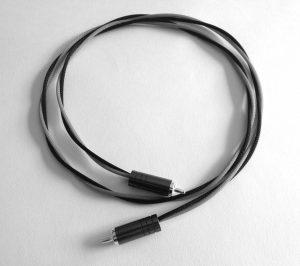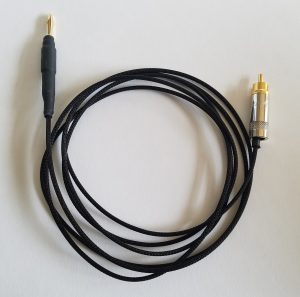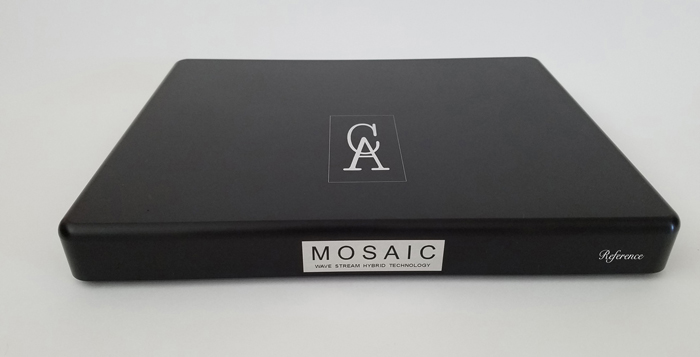One thing that has yet to trickle down from high-end audio to Personal Audio is noise suppression. And, for good reason: Until recently, the primary source for media has been highly compressed (and often badly compressed) low resolution digital files, so much so, that the standard for “Hi-Res” is uncompressed 16/44.1 kHz WAV or AIFF, those same standard resolution CD files that were rejected by the Audiophile community over 30 years ago. Also, Personal Audio has for a majority been a mobile platform, and with open backed headphones, noise floor has been masked by background noise. Beyond that, traditionally, imaging and soundstage have not been big issues in the headphone community since most recordings are designed for two channel loudspeaker system. And this is further supported by the fact that for many, the concept of “live performance” is prerecorded music played through PA speakers with random placement in noisy clubs with bad acoustics. But now, with higher resolution recordings and the return of vinyl, audiophile quality electronics, extremely sensitive and accurate IEMs, and headphones designed to compete with the best that two-channel has to offer in loudspeakers, noise suppression’s time in Personal Audio has arrived, and to meet that need enter the Caprice Audio MOSAIC Reference Wave Stream Hybrid Filter.

What does noise suppression do for me? Which is a good question, especially when one considers that most music has fairly limited dynamic range, many contend less than 8 bits (48 dB), and all of the things that contribute to the noise floor; including background noise, electronics noise, background noise of the recording (though this can often add to the realism of the playback rather than the opposite), electronics noise added into the recording, tape noise (if the original master was analog), vinyl noise (if the media is vinyl) plus the pops and clicks of scratches and dust on the record, and then a plethora of inducted noises, which is the target of your noise suppression. Or to put the question another way, if you have a 90 dB signal with only 48 dB of dynamic range (meaning you have a minimum signal of 42 dB) how could it possibly matter if your noise floor is -90 dB or -110 dB. And the answer is complex. First, music is not “white noise” (meaning amorphous across the audible spectrum) and your noise floor, by definition, is (so there is noise on frequencies where there is no signal). Secondly, noise floor is a compilation of artificial sounds that by their very nature don’t sound natural. But essentially, a high noise floor can mask micro detail that provides the temporal clues that creates a soundstage, building the illusion that you are hearing real live music and not a recording. And, the artificial nature of the noise also helps to break down that illusion.
Which brings up the question; do you care? An audiophile, like any connoisseur, is a product of ability and training. A person may be able to taste the difference between a 20 year old single malt and a 30 year old single malt and simply prefer the taste of a beer, or they may simply not be able to taste the difference at all. I can hear changes of volume of one tenth of a dB and identify changes of half a dB, yet the recognized minimum audible difference is one and a half dB, so hearing is a factor, but caring is also a factor. The only way to know if it matters to you is to listen to it, and decide if you hear a difference and if that difference is important to your listening pleasure. My job here is simply to separate the snake oil from the voodoo and let you know my opinion.
Wave Stream Hybrid Technology:
In the words of Caprice Audio’s Luis Alberto, “The Wave Stream Hybrid Technology is our solution to the problem of elevated noise floor that exists in all electronics. Our proprietary filter system lowers the noise plane, reduces impedance issues and helps create a sound field that is both pleasant and immersive.” In essence, to protect their IP (Intellectual Property), which is totally understandable, they are not willing to discuss the underlying principles, designs and technologies, which means we are left with judging the effect without actually knowing how it is produced. But, since in the long run the effect is all that matters, the how and why are not all that important.
The MOSAIC Reference Wave Stream Hybrid Filter is an elegant 10 ½” by 8 ½” by 1 ½” block of metal, either black or silver in color, with three RCA connectors on the back. I was also provided with three MOSAIC Torrent cables, one standard RCA to RCA and two RCA to Banana Plug which are meant to be connected to the negative terminals of your (loudspeaker) amplifier. Note: do not use the Banana cables unless you know the topology of your amplifier, as if your amplifier is not a single ended common ground amplifier, it is possible to damage said amplifier. Standard interconnects may be substituted for any of the cables.


I began my tests by connecting the MOSAIC to my desktop system (which was ungrounded for this test) the Questyle Audio CAS192D Current Mode DAC and CMA800R Current Mode Amplifier, and listening through my MrSpeakers ETHER C Flow and AEON Flow Open Orthodynamic Headphones. As recommended, I connected the primary Torrent cable to the center terminal on the MOSAIC and the coaxial digital in on the DAC, and two interconnects to two unused single ended inputs on the amplifier (left single ended in and right single ended out). Though the effect is supposed to be more pronounced with single ended connections, I began my tests with my standard balanced interconnects, but using a single amplifier for single ended output.
What I found amazing was that the effect builds over time, why this should be I have no idea, but it is not completely unprecedented (back in the 80s I performed some tests with a couple other audiophiles and determined that interconnects and speaker cables benefitted sonically from being allowed to rest for a few days). After 24 hours I was able to perceive about a 3 dB drop in noise floor (with no signal present). While 3 dB doesn’t sound like much, those who remember tape and know what Dolby B is, should remember that Dolby B only provides 5 dB of noise reduction, so 3 dB is fairly significant. After a couple of days it may have fallen even farther.
For sound check I picked Eiji Oue and the Minnesota Orchestra’s performance of “The Firebird Suite” because not only is the piece extremely dynamic, but due to a quirk of DSD it is quieter than my other high resolution recordings, which means that the noise floor of the electronics is very critical. The soundstage expanded beyond its normal hugeness and the quiet noises of the orchestra themselves, the tapping of bows, the turning of music came through adding a layer of reality to the presentation. Delicate instruments like the triangle, which are just meant to add a sense of atmosphere, were brought forth, not emphasized but more like having a mask removed.
To perform single ended tests, I switched to the Schiit VALI 2 Tube amp with the Schiit Modi Multibit DAC as source. I figured this would be a good test as tubes have a tendency to pick up background noises, and switched to my Nobel Katanas, since their extreme sensitivity and efficiency bring out the noise in all but the quietest systems.
Unlike with the Questyle, there was an immediate effect, but other than to just take note of that, I waited a couple of days before making an evaluation. The extended noise floor made picking out of the subtle tonal differences between the two acoustic guitars of ELP’s “Lucky Man” (Emerson, Lake & Palmer – 24/96 kHz) quite easy and the enhanced decay on all the instruments and vocals made for an epic soundstage.
Since the MOSAIC was designed for two channel use, I moved out to my main audio system. The effect here was both more subtle and more profound. Subtle because the noise floor was not overly audible, but profound because of how it affects the soundstage. The soundstage became much deeper and more focused, so much so, that if I were to leave it in the system on a permanent basis, I would need to retune the setup (I set up my two channel systems for very specific soundstages). Liz Story’s piano from “Wedding Rain” (Solid Colors – 16/44.1 kHz) was rich and delicate, putting me about 100 feet from the stage with her back to the audience (this is an aspect of the recording with the bass keys on the left and treble keys on the right, conventional side on placement of the piano does not have this effect) center stage in a fairly large concert hall. Width and height were proportional to a piano in a hall with good acoustics. Peter, Paul & Mary were about three feet apart on a stage level with the audience and about ten feet away for “Blowin’ in the Wind” (In Concert – DSD), again in a good sized hall.
For my last test, I plugged the MOSAIC into my home theater system where noise can be an issue due to the extreme dynamic range of the system (my speakers have a sensitivity of about 104 dB/Watt and my amp is 400 Watts per channel with an 800 Watt peak capability). As expected, once again a larger, deeper more focused soundstage and musicians performing against a black background.
Conclusions:
The Caprice Audio MOSAIC Reference Wave Stream Hybrid Filter absolutely works, how much difference it will make in your system depends a great deal on your environment, so it is definitely an audition sort of product. It is not a cheap product, so the current state of your system is a consideration. On the one hand, this is a one time purchase that will enhance the sound of your system regardless of other changes to it, even if you replace everything else, on the other hand, this is a tweak, a fine tuning of your sound, and it won’t make a bad sounding system sound good (unless your only issue is noise), it can only make a good sounding system sound better. So with that in mind, if you are unhappy with the overall sound of your system, and budgets are tight you may want to wait on something like this, whereas if your system is simply in transition the MOSAIC is a must have to get that final bit out of your audio system, and systems to come.
Price: $2,500 USD



















Want to join discussion?
Feel free to contribute!